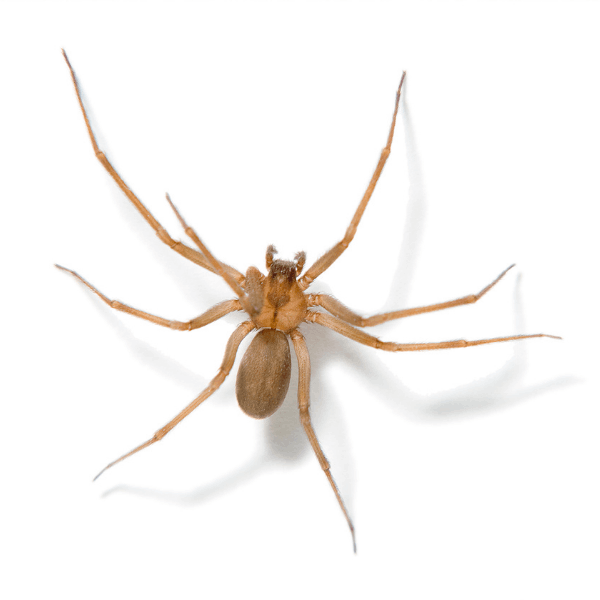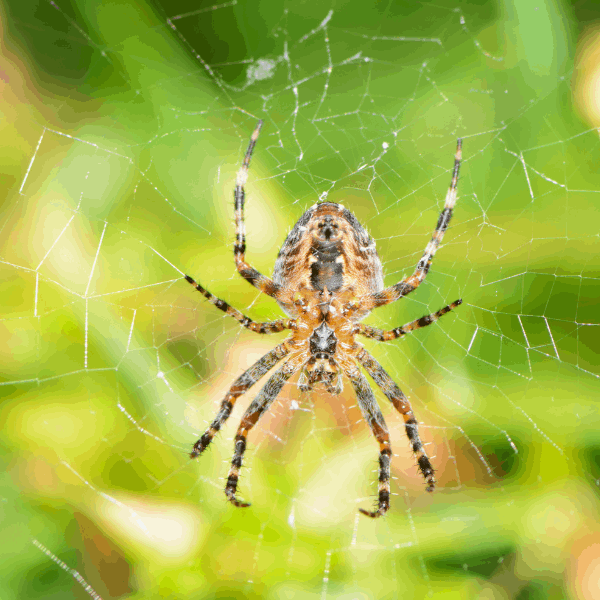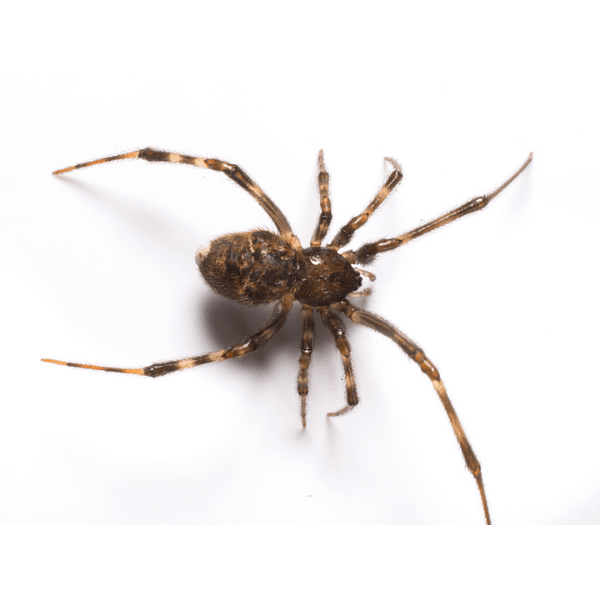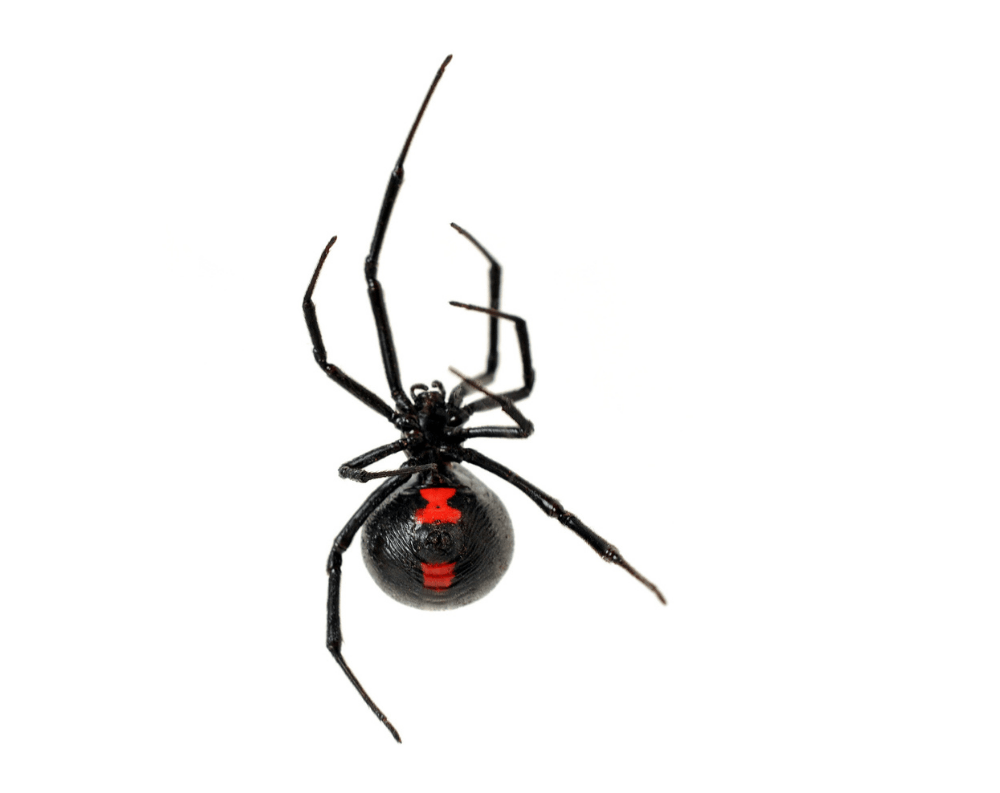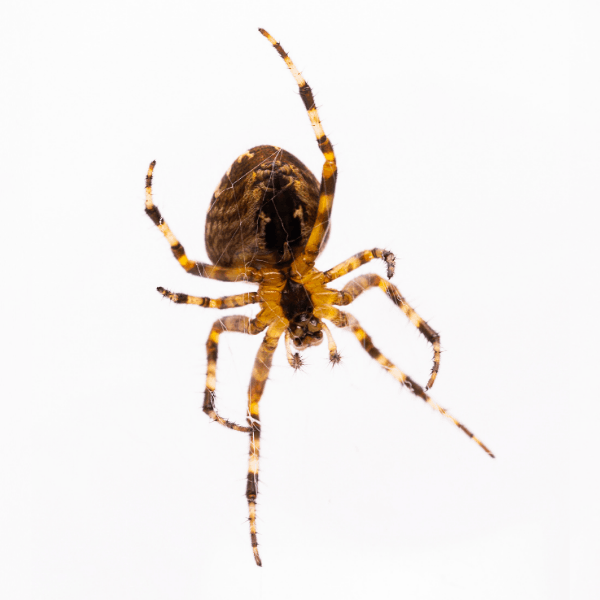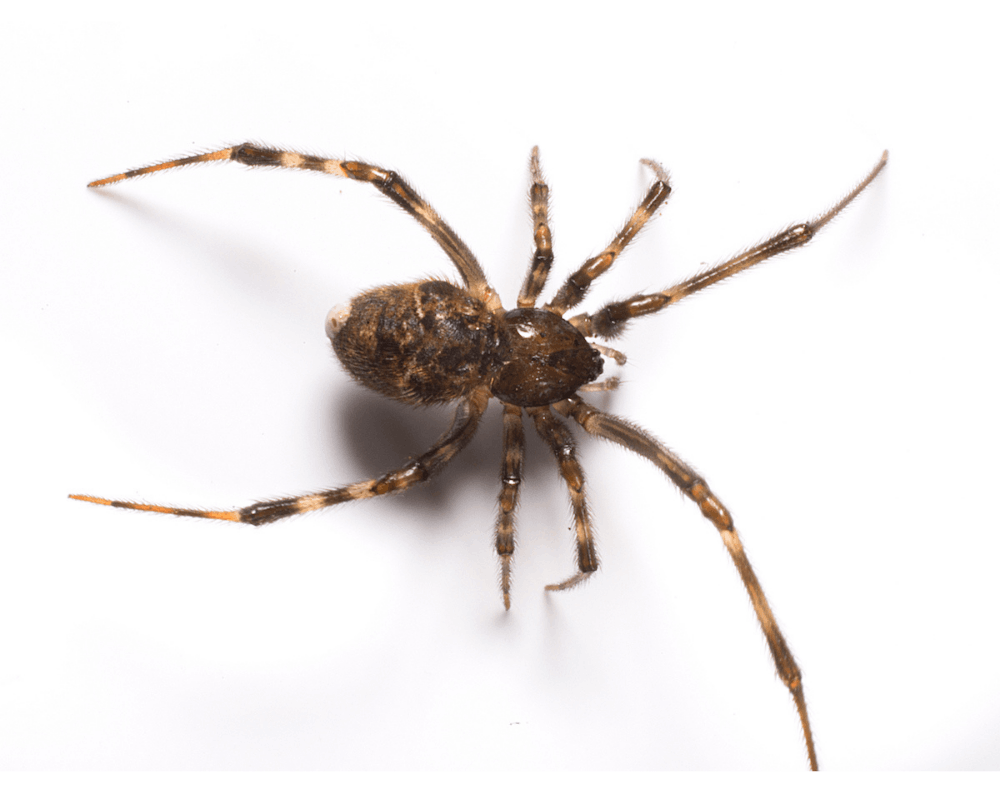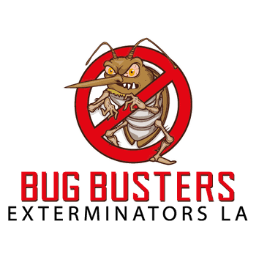Indoors, male brown recluse spiders live an average of 543 days, and females live 628 days, but 4-5 years is not uncommon. The female spins an irregular web in undisturbed areas, like the garage, attic and basement. The web is not used to catch prey, but rather as a retreat.
Outside, brown recluse spiders are typically found around rocks, piles of inner tubes, utility boxes, woodpiles, under bark, etc. These spiders have been found in such places as cedar shake roofs.
Inside the home, brown recluse spiders can be found in almost any undisturbed area. They are most commonly found in boxes, among papers, and in seldom-used clothing and shoes, although they can be found in corners, underneath tables and chairs, or in crevices such as those found along baseboards, doors, and window moldings. Storage areas such as closets, bedrooms, attics, crawl spaces, and basements are the preferred nesting areas of brown recluse spiders. In commercial buildings, brown recluse spiders may be found in heat tunnels, boiler rooms, attics, basements, storerooms, and garages.
With respect to food, brown recluse spiders prefer live small prey, such as cockroaches and crickets. If their prey is large, they would rather it to be dead, presumably to avoid damage to themselves. Their prey are primarily insects.
Brown recluse spiders often live outdoors where they are typically found around rocks, utility boxes and woodpiles. Indoors, brown recluses can be found in any undisturbed area, such as inside boxes, among papers, in seldom-used apparel and shoes, under furniture or in crevices of window moldings. Closets, attics, crawl spaces and basements are the most common brown recluse spider hiding spots.

